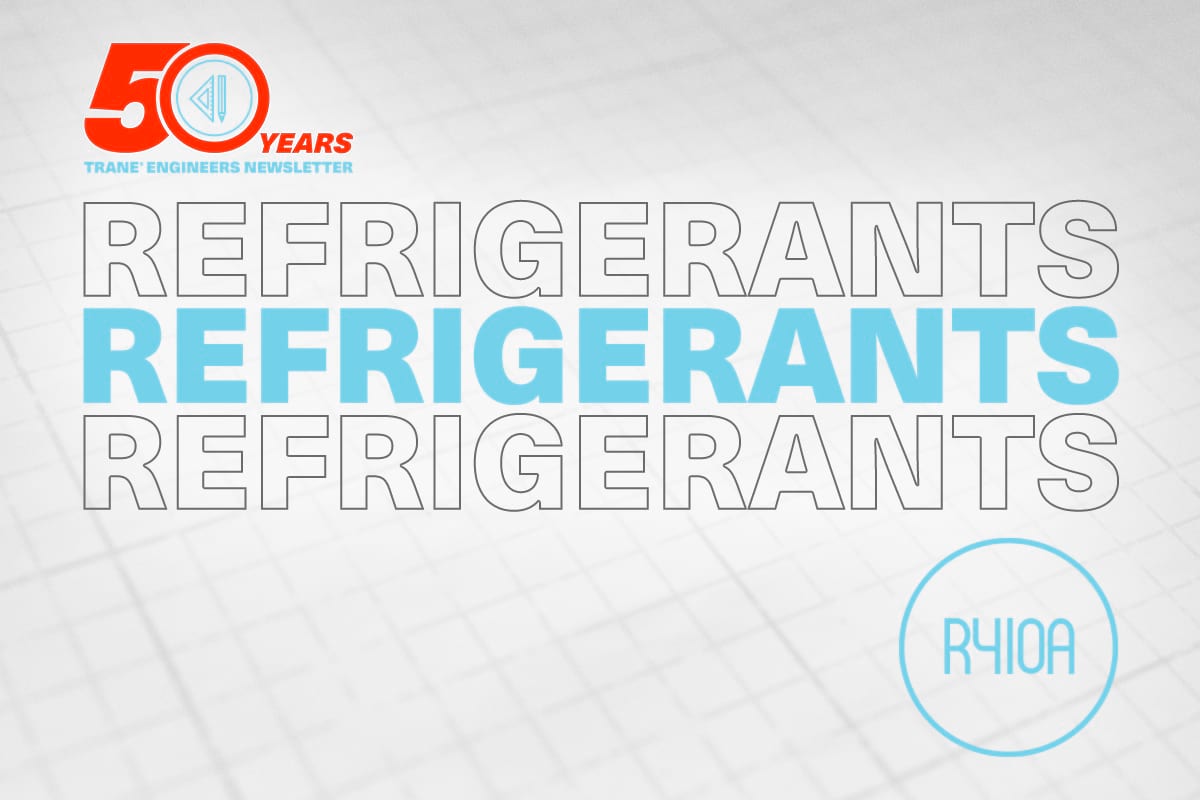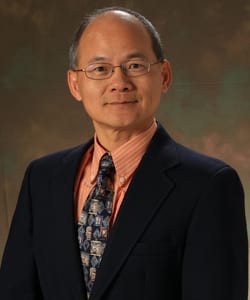
Hello Summer! The heat and humidity of the season is finally knocking on our door. This means that our heavy lemon juice consumption season is coming to sporting events, neighborhood fundraisers, and local festivals. Speaking of juice, in our July Engineer Newsletter Blog, we will quickly browse through our past newsletters and other literature on refrigerants, the so-called “magic juice” inside air conditioners.
Refrigerants are in a constant state of evolution, from the early days of scientific discovery when CFC refrigerants were first introduced to the industry, through the transition period of HCFC and HFC refrigerants, and on to the period of low GWP refrigerants. Refrigerant manufacturers, the HVAC industry, and many others have been regularly challenged by evolving climate and environmental policies and continually pushed to adopt better, more environmentally friendly refrigerants.
Previously, two Engineers Newsletters were published on the topic of refrigerants. The 2005 EN titled “The Refrigerant Opportunity: Save Energy and the Environment” (volume 34-2) discussed the numerous versions of the U.S. Green Building Council’s (USGBC) LEED Green Building Rating System® and their points and certification level structures. When written, the content of the EN centered around the LEED technical and scientific advisory committee’s task of reaching a balanced approach to evaluating refrigerants. The EN addressed discussions surrounding consideration of refrigerant calculations and threshold levels which continue their use even in the latest version of LEED 4.1.
The second EN titled “HVAC Refrigerants: A Balanced Approach” (volume 40-2, 2011) took the reader back in time for a review of the steps taken to find alternative refrigerants and the industries’ direction forward toward improved environmental impact. The article also discussed special applications and limitations of CO2, hydrocarbons, and ammonia refrigerants. One paragraph, in particular, is still very relevant in today’s environment:
“Maintaining a balance between the lowest possible refrigerant emissions and the best possible energy efficiency is the key to being both environmentally and economically responsible. Achieving this balance in a cost-effective manner is critical in order to make these new designs affordable for the end user.”
What wise guidance which still rings true today!
What’s new with refrigerants?
In addition to the past ENs, the ASHRAE® Journal has also been a wealth of news and developments in terms of regulatory pressure on refrigerants. Included below are some up-to-date articles on this industry news:
The ASHRAE® Journal article titled “A Conversation on Refrigerants” (March 2021, www.ashrae.org) states:
- The refrigerant choices for direct replacement options and new products for low-pressure machines are R514A and R-1233zd(E).
- R513A will serve as the interim replacement solution.
- The long-term low GWP alternate solution refrigerants for R134a are R1234yf and 1234ze(E).
- The leading alternatives to R410A are R454B and R-32.
The November, 2021 ASHRAE Journal article “Breaking Down the EPA’s Final Rule to Cut HFCs” discusses the following key points:
- The EPA’s final rule is set to phase down the U.S. production and consumption of HFCs by 85 percent over the next 15 years.
- High GWP refrigerants are to be reduced by 10 percent in 2022 and 2023, and
- The next reduction rule is another 30 percent starting in 2024.
All articles point toward the same call for action…the pressures to move away from high GWP refrigerants are mounting!
With the HFC phase-down schedule approaching, the time for building owners to conduct a complete review/audit of existing refrigerants is now. For existing buildings, knowing the type of machines and their respective refrigerant, safety, and costs will help the transitional effort to lower GWP alternative refrigerants go smoothly. For new construction, it is the designer’s responsibility to inform the owners of their investment and current industry-related regulations.
As always, the Engineers Newsletter will continue serving our readers’ needs by addressing industry-relevant topics. If you have a suggestion for a future EN, please feel free to reach out to us! Thanks for continuing to read this blog.
Engineers Newsletter

About the author
Chris Hsieh, Applications Engineer
Chris has been with Trane in La Crosse since 1996. He is one of the contributing authors for the Trane Engineers Newsletter and the Engineers Newsletter Live programs. His engineering focus includes system applications support, industry-related green/environmental programs, ENERGY STAR®, LEED, ASHRAE 189.1, and IAQ initiatives. Chris is active in various ASHRAE technical committees, most recently serving on the ASHRAE 62.1 committee, and has served as a consultant for ASHRAE’s SSPC 189.1 since 2013.
Chris also assisted LEED EB (Silver) certification for the Trane St. Paul facility and LEED NC (Gold and Certified) certifications for the Trane Taicang office and facility buildings. He is a LEED-AP BD+C, certified energy manager, UL environment DfS (Design for Sustainability) gold certified, and member of ASHRAE.
Chris is enthusiastic about youth education with a focus on STEM and volunteers his time as a math club coach for a local middle school, helping to advance the team to the state-level competition three years in a row.











































































